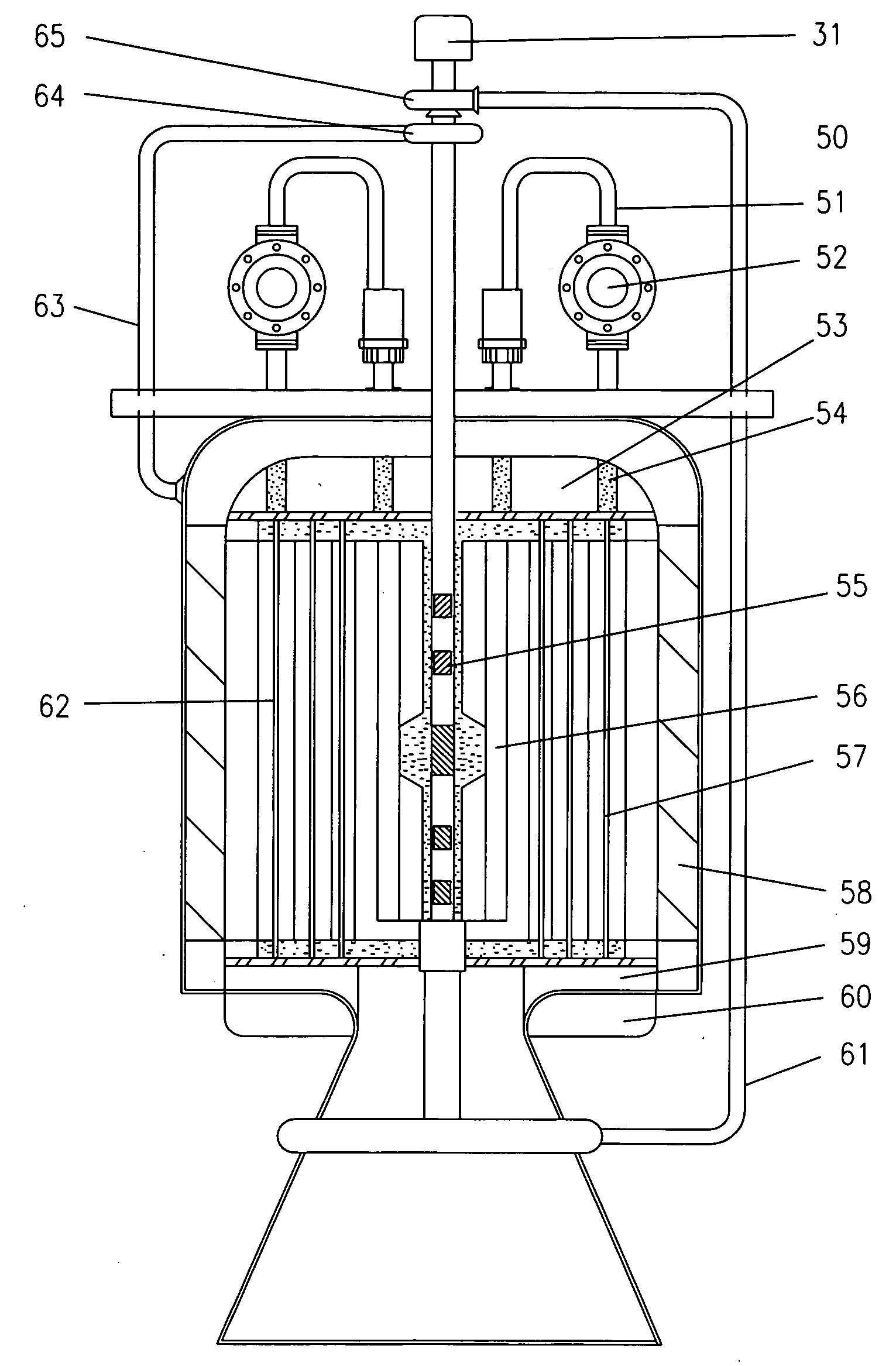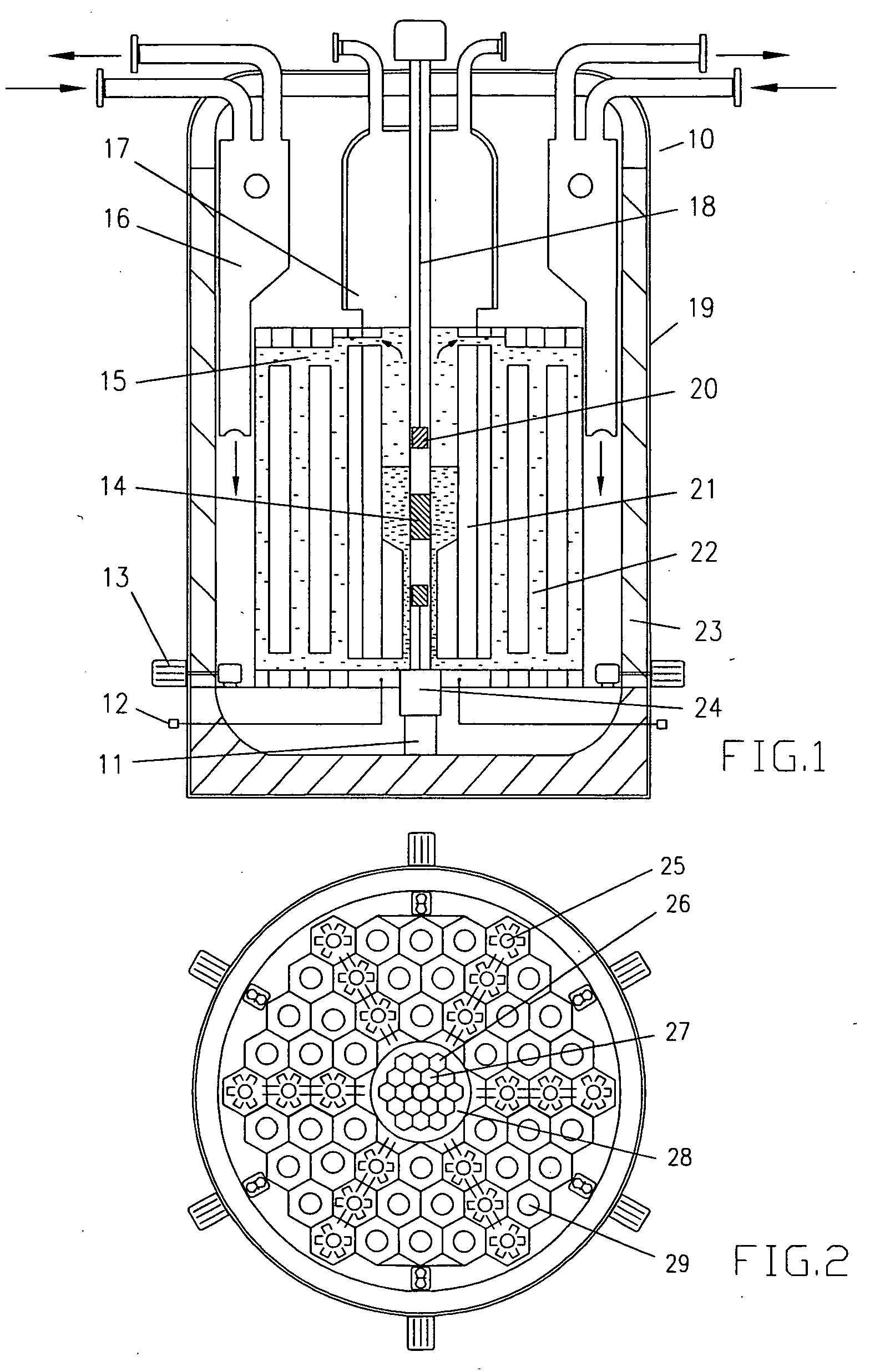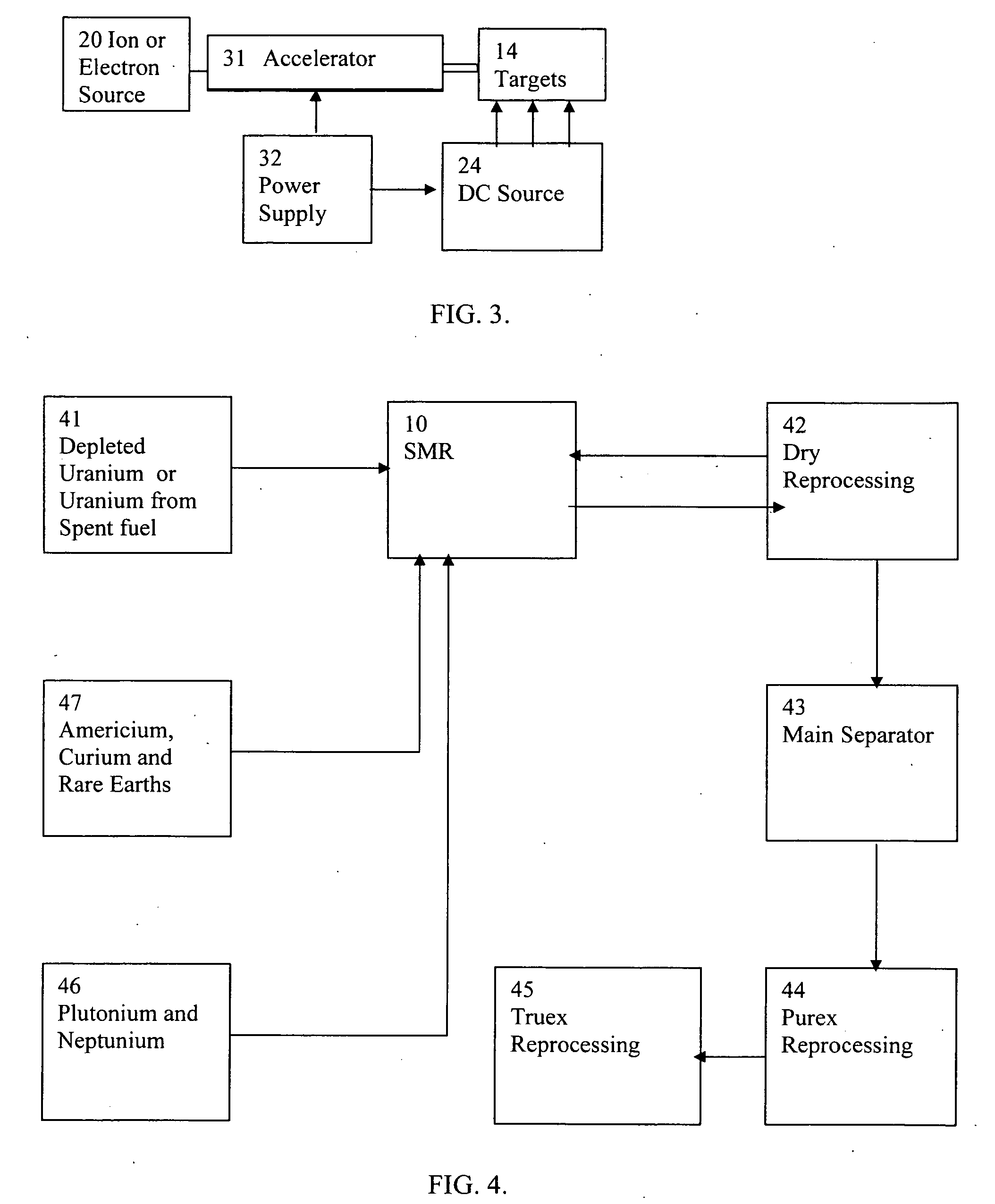High flux sub-critical reactor for nuclear waste transmulation
- Summary
- Abstract
- Description
- Claims
- Application Information
AI Technical Summary
Benefits of technology
Problems solved by technology
Method used
Image
Examples
Embodiment Construction
[0037]By burning plutonium without compromising reactor safety and requiring fuel reprocessing, the MSR may solve one of the nuclear industry's main problems. With the SMR employment the uranium energy resource can be extended and waste volume can be reduced hundred times the present values. The most effective way of using the SMR would be to burn the actinides in the feedback loops with a gas fission product separated and disposal facility, inlet / outlet manifolds and other means for the fissile fuel feed and processed fuel drain. Fresh fuel is continually fed into the core at the rate up to 300 g / day (about 100 g / day with conversion factor of 0.8).
[0038]There is no need for long-lived radioactive materials to leave the reactor site. Fissionable fuel produced through conversion is consumed in the module. The fission fuel inventory of the reactor is quite low (up to 6 kg of low-concentration plutonium solution in the blanket and about 18 kg of high-concentration plutonium solution in...
PUM
 Login to View More
Login to View More Abstract
Description
Claims
Application Information
 Login to View More
Login to View More - R&D
- Intellectual Property
- Life Sciences
- Materials
- Tech Scout
- Unparalleled Data Quality
- Higher Quality Content
- 60% Fewer Hallucinations
Browse by: Latest US Patents, China's latest patents, Technical Efficacy Thesaurus, Application Domain, Technology Topic, Popular Technical Reports.
© 2025 PatSnap. All rights reserved.Legal|Privacy policy|Modern Slavery Act Transparency Statement|Sitemap|About US| Contact US: help@patsnap.com



